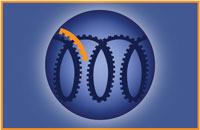Putting the ‘fun’ into functional genomics: a review of RNAi genomewide cellular screens
18 December 2012 | By Dr. Stephen Brown, Sheffield RNAi Screening Facility, Biomedical Sciences, University of Sheffield
As RNA interference (RNAi) enters its teenage years from the first critical observations, it has now reached a multi-billion pound industry. There are few research areas that have expanded as quickly and spectacularly as the field of RNAi. The potential of RNAi initially sparked a functional genomics gold rush. Different…







